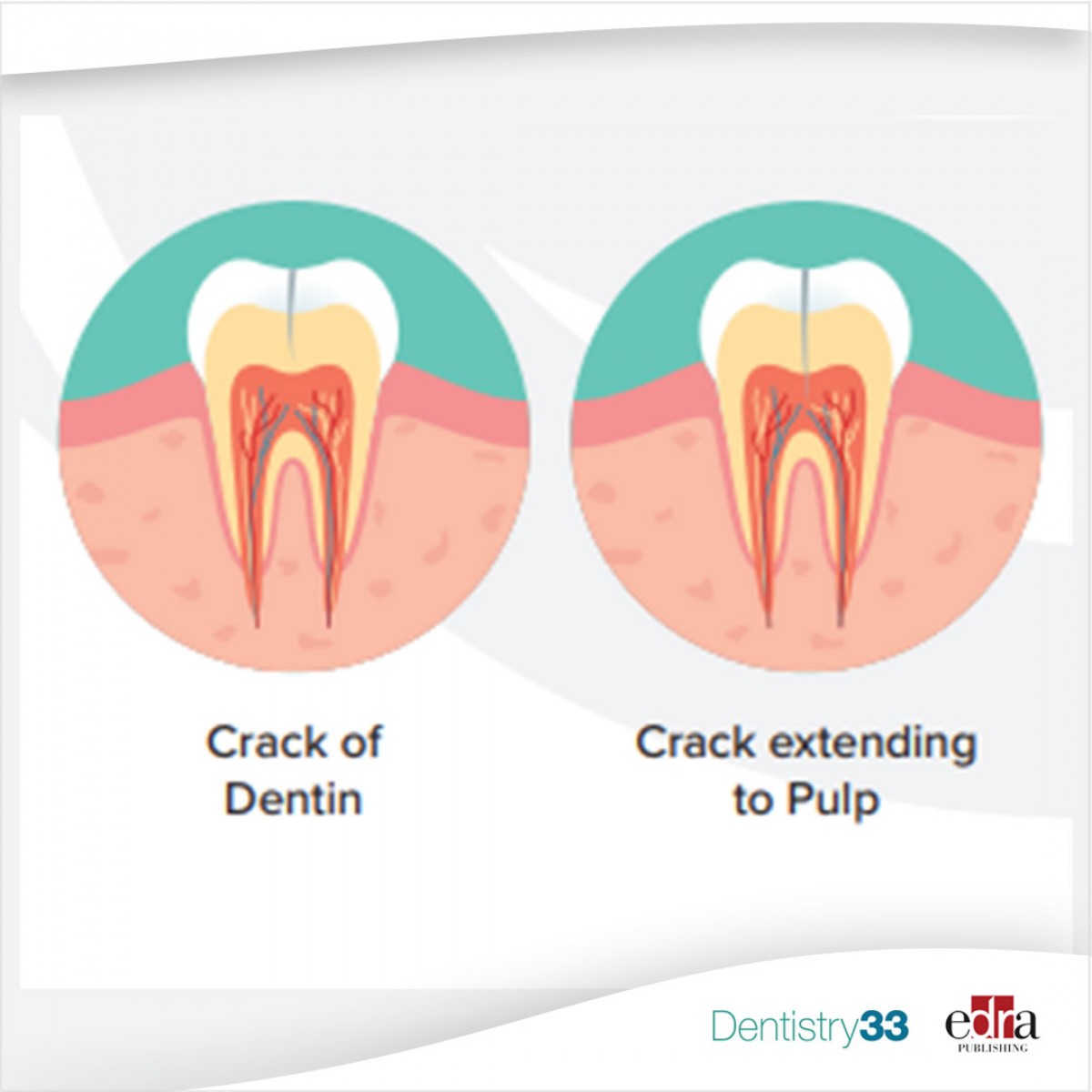
FDI guidance on the treatment of cracked tooth syndrome
Simona Chirico
Cracked tooth syndrome (CTS) is a common occurrence and can be caused by stress or trauma-related symptoms such as teeth grinding and chewing or biting on hard objects. The prevalence of cracked teeth cases has especially increased during the COVID-19 pandemic due to its stressful nature.
To help dentists and dental teams diagnose and appropriately treat CTS, the FDI World Dental Federation's Dental Practice Committee (DPC) has developed guidelines outlining the etiology, signs and symptoms, prevention methods, diagnosis and treatments available.
A cracked tooth is characterized by an incomplete fracture, i.e., one that runs from the occlusal surface of the tooth towards the root.
Oral health professionals are strongly encouraged to raise awareness of CTS among colleagues and patients and to make early diagnosis to preserve and improve the oral health of their patients. The DPC has also developed a companion infographic, which summarizes the content of the indications, to help dentists more easily share information with their peers, colleagues and patients.
Diagnosis
A tooth is defined as "cracked" when characterized by a fissure that extends from the occlusal surface of the tooth vertically to the root. The tooth may not have split yet, but the crack can gradually spread.
Suggested predisposing factors for cracked tooth syndrome include previous cavity preparation, restorative material compaction or bonding procedures, tooth morphology, loss of cervical tooth surface, function, parafunction, and trauma, psychological stress.
There is often a history of pain when chewing and sensitivity to thermal (mainly cold) stimuli or sweet foods and drinks. There may also be a history of lockjaw, sore facial muscles, temporomandibular (TMJ) disorder, loss or displacement of restorations, abrasion, abfraction, general sensitivity, or tooth movement.
A fracture can lead to secondary involvement of the pulp or the periodontium.
The crack and fracture detector is the tool to diagnose cracked tooth syndrome. With its thick end, introduced into the cusp of the tooth examined, the patient bites down, clenching the teeth for a few seconds. If there is a fracture, the patient feels pain when the pressure is released. The detector is also helpful in diagnosing a cracked tooth is transillumination.
Treatment
A cracked tooth that is left untreated will gradually get worse, eventually leading to its loss.
If the fracture has spread to the pulp, the tooth may be treated with a root canal procedure and a crown to prevent it from spreading. However, if the fracture extends below the gumline it may be more difficult to restore. Therefore, prompt treatment is extremely important.
In some cases, endodontic treatment can be conducted to save part of the tooth.
Despite treatment, some fractures can continue to progress, leading to tooth loss. Placing the crown over a cracked tooth provides the most protection but does not guarantee success in all cases.
Treating a cracked tooth is important because it relieves pain and reduces the likelihood of it getting worse. After the treatment, in most cases the teeth guarantee comfortable chewing for years.
For more information, see "Cracked Tooth Syndrome: An advice sheet for dentists and dental teams."
 Related articles
Related articles
Oral Hygiene & Prevention 19 November 2024
Oral hygiene in the prevention of caries and periodontal disease
While some periodontal disease may be as old as mankind itself, caries as a public health problem appeared with the development of flour and sugar mills, and the universal access to fermentable...
Oral Hygiene & Prevention 26 August 2024
Ventilator-associated pneumonia (VAP) is the most common nosocomial infection reported among mechanically ventilated patients.
Adams School of Dentistry’s Amy Lawson, DDS ’27, and Ricardo Padilla, DDS, were recently invited to represent ASOD at the UNC Lineberger Comprehensive Cancer Center’s “Exploring Cancer Spring...
Prevention is to be considered the most significant tool for involving the assisted person in being the responsible protagonist of his or her lifelong health project.
Oral Hygiene & Prevention 24 January 2024
Clinical prevention approaches in the management of implant patients
The failure of implant therapy is characterized by the presence of visual signs of inflammation and bleeding on probing, mucositis (PIM) and in cases of peri-implantitis (PI), loss of supporting...
 Read more
Read more
Much like EMTs rushing to the scene after an accident, stem cells hurry to the site of a skull fracture to start mending the damage. A new finding has uncovered the signaling mechanism that triggers...
Products 05 November 2025
SimplyTest has launched a groundbreaking saliva-based test to detect high-risk strains of oral human papillomavirus (HPV), a major cause of oropharyngeal cancers.
News 05 November 2025
Perimetrics, Inc., a dental technology company pioneering quantitative diagnostics, announced today that the U.S. Food and Drug Administration (FDA) has granted clearance for the InnerView...
News 05 November 2025
On October 15, open enrollment for Medicare began nationwide. Hundreds of thousands of seniors in New Jersey will once again face the challenge of finding the right Medicare coverage, including the...
Digital Dentistry 04 November 2025
Digitalisation is an expanding field in dentistry and implementation of digital teaching methods in dental education is an essential part of modern education.














